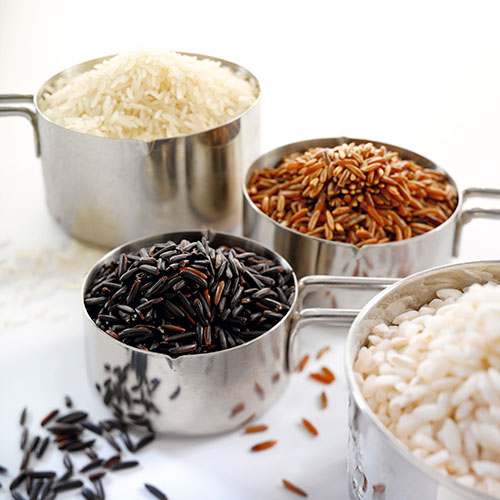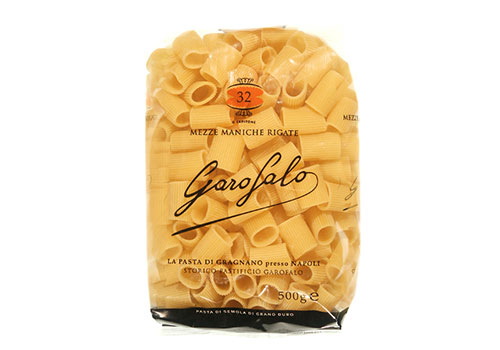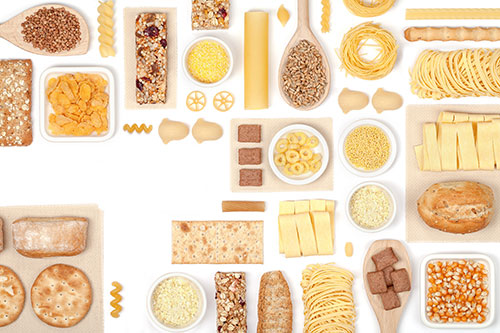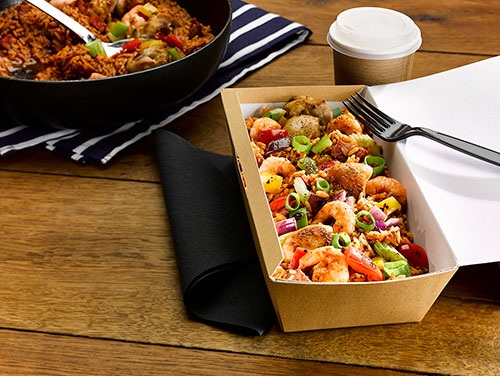Going against the grain: new trends in carbohydrates
Rice and pasta doesn't just have to be bulk; new, exotic trends in carbohydrates can bring real excitement to a menu. Angela Frewin reports
Rice and pasta are invaluable menu staples that can work hot or cold, as starters, accompaniments, mains or desserts. They absorb flavours well and offer a cheap, satisfying way to bulk up meals, from soups to salads.
This versatility makes these low-fat sources of protein, fibre and energy adaptable to emerging taste and health trends, despite competition from superseeds, raw cauliflower rice or spiralised courgette noodles.
As Craig Dillon, head of foodservice at Tilda, says: "Rice is the mainstay of food for over half the world's population, but it's so much more than an accompaniment to a curry or Chinese." To showcase its flexibility during September's National Rice Week, Tilda has devised innovative recipes putting basmati, jasmine, brown, white and wild rices to work in muesli, chocolate brownies, fritattas, burgers, pizza bases and blinis.
Basmati rice has supplanted long grain as the consumers' favourite, but there are more than 100,000 variants (white, brown, red or black) to meet all catering needs, from standout speciality grains to microwavable convenience.
Uncle Ben's puts its quick-cook, long-hold basmati and long grain rices through a patented parboiling process that keeps grains separate even when over-boiled, while Tilda has paired healthy brown wholegrain rice with the eating properties of easy-cook long grain white to help health and education caterers meeting dietary regulations.
Rising rice sales at Bestway Wholesale are attributed by catering sales director Ron Hickey to the public hunger for authenticity, spicier flavours and world cuisine. Tastes are expanding beyond India and China to other Asian cuisines, such as Thai, and influences from Mexico, Brazil and Peru.
With Mintel identifiying Chinese as the nation's favourite ethnic food, Uncle Ben's development chef Roy Shortland sees caterers incorporating Chinese flavours and ingredients in various guises on menus - from traditional Chinese stir-fries to spicy salads and even British barbecues.
"Lightly spiced special fried rice is great as a filling in lunchtime sweet and sour chicken wraps or as a bed for pan-fried scallops for a fine-dining starter," says Shortland. Rob Owen, executive development chef at Creed Foodservice, suggests braising Indian pilaf rice in hot chicken, beef or vegetable stock as an accompaniment to kebabs and grilled meats.
Giving rice an Asian lift is as simple as adding fresh lime juice, chopped fresh coriander and coconut milk, says Owen. More adventurously, a sweet soy sauce and shrimp-based nasi goreng paste will create a Indonesian-style fried rice, while a rendang curry paste of chillies, lemongrass, garlic, ginger, tamarind, coriander and turmeric will give a taste of up-and-coming Malaysian cuisine.
Brakes rice
Hot stuff
Bibimbap, the Korean stone-bowl-cooked rice dish, is bringing theatre to the table. "This sizzling bowl is served with a raw egg yolk perched atop a mound of mixed rice, often laced with kimchee and vegetables," says Duncan Parsonage, head of food development at Fresh Direct. "This is then quickly combined in front of the diner and customised with gochujang (chilli paste) and soy sauce."
Risotto rice is also winning new fans in the guise of arancini - a Sicilian street food of golf-ball-sized fried rice balls filled with meaty ragu or mozzarella. London's Arancini Brothers use them in wraps, salads, burgers and stews and Parsonage reckons it won't be long before foodservice picks up the ball(s).
Shape of things to come
Pasta wise, Parsonage detects some conservatism as retailers and chain restaurants stick with classic shapes such as penne, linguine, spaghetti and lasagne.
"There seems to be a distinct lack of innovation on the sauce and embellishment front too," he adds.
"It's all still about carbonara, lasagne al forno, and bolognese."
Paolo Veneroni, director of sales at Continental Quattro Stagioni (CQS), estimates there are some 350-400 shapes and varieties of dried pasta in Italy - even more counting regional differences - which gives operators plenty of scope to differentiate their offer with lesser-known styles.
CQS's new La Molisana vintage assortment of premium dried pastas (boasting a 15%-plus protein content) includes large corkscrew-shaped Fusilloni Superiori, thick Calamarata Sublime rings, chunky Paccheri Reali cylinders and extra-rough Spaghetti Ruvidi.
Suppliers are also serving up some innovative and award-winning flavours. Mushroom and Black Truffle, Wild Boar and Burrata and Spinach Tortelloni were among 11 Great Taste Award wins this year for La Tua Pasta - which has a chocolate ravioli in the pipeline.
Cranberry and goats' cheese, Devon white crab and beetroot are other unusual fillings from the London supplier of authentic freshly-made plain and filled pastas, using a special blend of Italian durum wheat and 00 flour along with a 28% egg content.
Macaroni cheese is also ripe for a flavour upgrade. "Expect to see new examples, such as truffled lobster, charred corn and jalapeÁ±o, three cheese, and roasted butternut squash," says Parsonage. "Indeed, the mac 'n' cheese stuffed toastie is a triumph if executed well!"
Spicy 'nduja Italian sausage paste and crispy, shallow-fried spaghetti cakes cooked in tomato sauce could also be heading our way, predicts Asda innovation development chef Mark Richmond. Meanwhile, the US Institute of Food Technologists anticipates dishes from European nations, such as German spÁ¤tzle (a soft egg noodle side) and pierogi - shaped, filled sweet or savoury dumplings popular in Poland, Ukraine and Slovakia.
Giving up the gluten
The explosion in free-from diets has rocked the wheat-based pasta and noodle boats - Veneroni reckons "the need to offer gluten-free dishes on a menu is perhaps one of the biggest changes after the growth of vegetarianism."
Gluten occurs in barley, rye, triticale and wheat products (including spelt, kamut, farro, durum, bulgar and semolina) but not in amaranth, buckwheat, corn, millet, oats, quinoa, sorghum, teff and wild rice.
Owen now sees an expanding choice of gluten-free shapes with improved recipes that hold and cook better, such as Eskal's corn-and-water based gluten-free fusilli. Corn, rice and quinoa are used in CQS's fusilli, penne rigate and spaghetti shapes from Garafalo, Italy's only producer of bronze-die gluten-free pasta.
Legumes, too, are providing gluten-free alternatives - from black bean spaghettis to Waitrose's red lentil, green pea, chickpea, edamame and maize pastas. Noodle options include rice noodles, glass noodles using mung bean, yam, potato or cassava starch and seaweed-based kelp noodles.
And the diabetes epidemic may give a boost to trendy superfood salads based on mixed rice and grains as cooking and cooling starchy foods like rice, legumes and potatoes creates 'resistant starch'. This has been found to lower blood sugar, improve insulin sensitivity and nourish the friendly gut microbes essential to good health.
Pasta primer
Paolo Veneroni at CQS gives a few pointers on choosing and preparing pasta.
Authentic dried pasta is made with 100% durum semolina flour and water; fresh pasta can be made from semolina and water or all-purpose flour and eggs.
Bronze-die extruded dried pasta is the gold standard, offering the artisan look, improved 'mouthfeel' and the rougher surface needed to hold sauces that cheaper, mass-production plastic moulds cannot attain.
Shapes range from simple tubes and rice-like orzo grains to bow ties such as farfalle (butterfly) and unique shapes such as radiatori (radiators!).
Simple pasta works best with simple sauces, while complex-shaped pastas are ideal for thicker sauces.
The world's greatest sauce cannot save mushy pasta, so Veneroni advises cooking until al dente (firm to the teeth) in a large pot of well-salted water to prevent sticking and to preserve proteins, gluten and flavour (which should not be rinsed away unless making pasta salad). Reserve a cup of drained pasta water to add body to sauces.
Jambalaya
Seeds of growth
Wholesaler Brakes is seeing a surge in demand for ancient grains and seeds as standalone ingredients as well as in its salads and ready meals. Mark Irish, head of food development at Brakes, believes they are seen as healthier than durum wheat and more eco-friendly with their reduced need for irrigation, pesticides and fertilisers. Its top-selling golden oldies include:
- Farro (or emmer wheat) - a nutty, creamy grain and one of the first to be domesticated in the Middle East
- Freekeh - an ancient Arabian cereal food made from green durum wheat that is roasted and rubbed to create a unique nutty, flavour
- Kamut - an ancient Egyptian, and now trademarked strain of antique wheat
- Quinoa - grown in the Andes for some 4,000 years
- Amaranth -a nutty staple of the Mexican Aztecs and grown in Peru, this superfood seed is tipped as the new quinoa
Super-nutritious legumes (peas, beans and lentils) are selling well during this United Nations' International Year of Pulses, and Owen reports a 'massive spike' in demand for soya edamame beans.
Tilda's new pulses and rice range combines basmati rice and legumes with flavours including Morrocan (chickpea, harissa and lemon), Mexican (pinto bean, chilli and lime) and Japanese (edamame, spring onion and wasabi).
Contacts
Bestway Wholesale
Brakes
Continental Quattro Stagioni
Creed Foodservice
Eskal Foods
Fresh Direct Group
La Tua Pasta
Tilda
Uncle Ben's
Continue reading
You need to be a premium member to view this. Subscribe from just 99p per week.
Already subscribed? Log In









